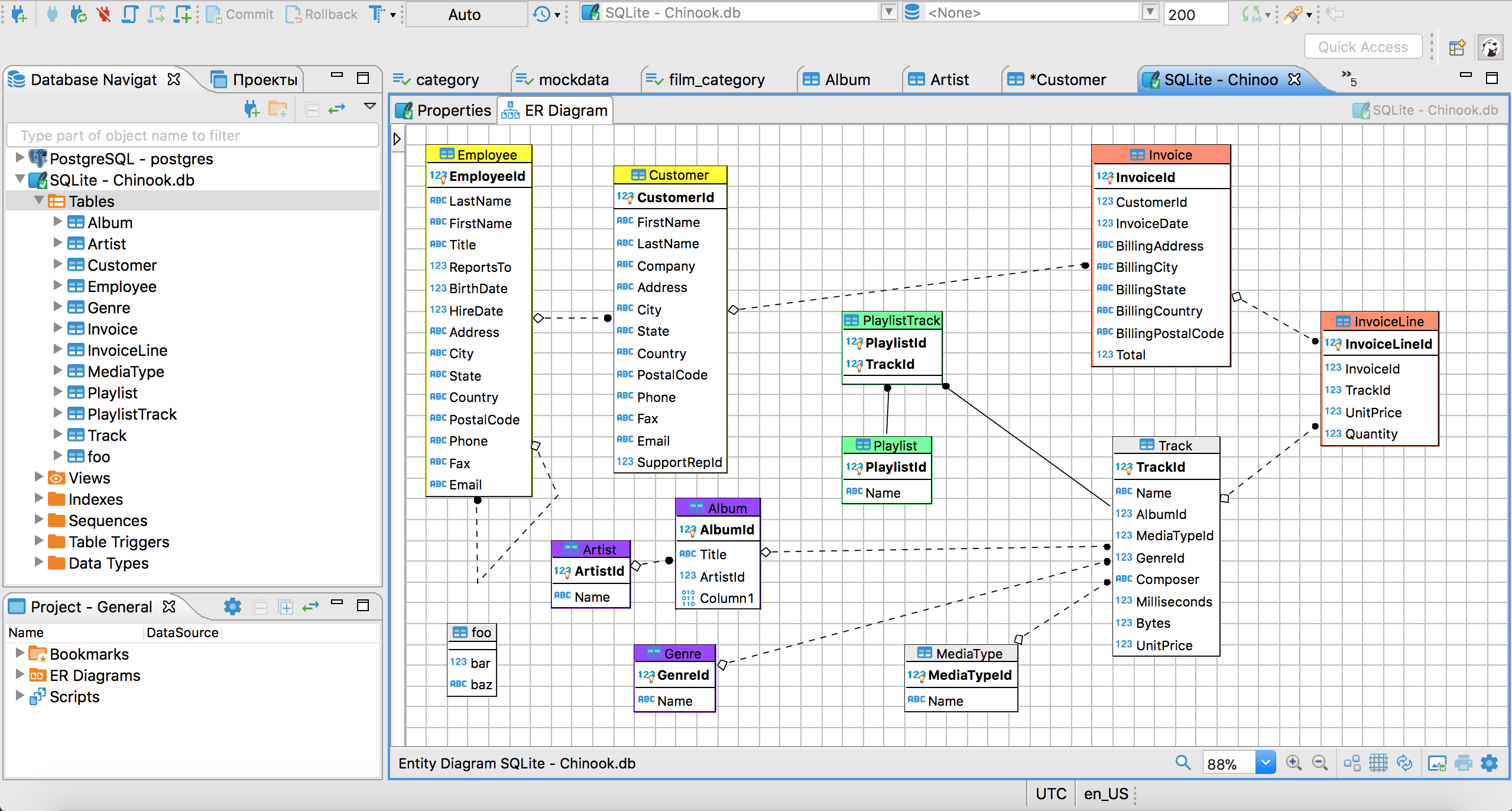
- #DBEAVER POSTGRESQL HOW TO#
- #DBEAVER POSTGRESQL PASSWORD#
- #DBEAVER POSTGRESQL DOWNLOAD#
- #DBEAVER POSTGRESQL FREE#
- #DBEAVER POSTGRESQL WINDOWS#
Next, I can test the connection (click Test Connection) and verify that it connects successfully:Ĭlick OK and then Save to save the new connection and then if we go to the Database Navigator panel in DBeaver, I see my “motorcycles” database, the “jamesmillers” schema and the “cycles” table!Īs a last step, I can run a query on the cycles table, and I indeed do see my 1 row of data. This is done so that I will be able to access all database that are running within this server rather than just the database I named on the Main connection dialog. One other step that is required is to click on the tabbed panel, select PostgreSQL , and then check the box Show all databases.
#DBEAVER POSTGRESQL PASSWORD#
I left the Database as “postgres” which is the default database and lastly, entered the password (again from the Docker command I executed to start my image): Next, I set the Port to 5439 (that is the port ID I set when I created and started my Docker image. Notice the Host is set to “localhost” since my Docker container is running locally.

On the next dialog I need to set some specific connection settings. To connect to the PostgreSQL server from DBeaver I clicked in the “ New Database Connection” icon and was presented with the “ Connect to a database” dialog (shown below) where I selected the PostgreSQL icon and then clicked Next: Since I have already downloaded and configured the tool, I can go ahead and create a connection to my server.
#DBEAVER POSTGRESQL FREE#
DBeaver is a free multi-platform database tool for developers, database administrators, analysts and all people who need to work with databases. PLSQL is fine, but now I want to explore my PostgreSQL database with the graphical user interface named DBeaver. You can see that the insert successfully inserted 1 row into the table and just to be sure, I executed a query on the table and the result is shown. I can see that my tables “cycles” does in fact exist so next, I want to load some data so I can use the following command: Now that I have created my schema, I want to create a new table to hold some data so I can run this CREATE TABLE command:Īfter the new table “cycles” (within the jamesmillers schema) is created, I tried using the \dt command to list all of the tables, but I found that \dt ‘jamesmillers.*’ is needed to show what tables exist within my specific schema. I want to create a new schema, named “jamesmillers” within my motorcycles database, so first I use \c to connect to that database and then the CREATE SCHEMA command to create my schema.

In PostgreSQL, a schema is a namespace that contains named database objects such as tables, views, indexes, data types, functions, stored procedures and operators. I want to create a new database called “motorcycles” so I use the following command:Īfter running that command, I will again use \l and now see my new PostgreSQL database. I see that the default database “postgres” is running along with some template databases.

To see what databases are currently running, I can type \l: First, I execute a Docker command to see what databases and schemas may already exist in my PostgreSQL server. Now I am ready to use psql within my PostgreSQL server. To accomplish this, I need to execute the following command in my PowerShell session: To “get things started” in the PostgreSQL server I will create a new database and schema using psql, which is a terminal-based front-end to PostgreSQL. Once the container is created, you can use the following command to see the running containers:
#DBEAVER POSTGRESQL DOWNLOAD#
Once this is done, any other containers I create using this image the download will not be necessary. Since Docker didn’t find a PostgreSQL image in my local environment, the latest image is downloaded and used to create the new container. I’ve also set a password (TheBest1969) and requested the latest postgres image. I am naming my container “pg_dbeavers” and will be using port 5439 to communicate with it (5432 is the default port that PostgreSQL uses).
#DBEAVER POSTGRESQL WINDOWS#
To do that, I open a MS Windows PowerShell window and type the following command:ĭocker run –name pg_dbeavers -p 5439:5432 -e POSTGRES_PASSWORD=TheBest1969 -d postgres:latest
#DBEAVER POSTGRESQL HOW TO#
In this post I want to demonstrate how to create and start a Docker container using a Postgres image to run a PostgreSQL database server in a Docker container so that I can do some development in my local environment.Īssuming Docker is running, the first step is to create a container running PostgreSQL.


 0 kommentar(er)
0 kommentar(er)
